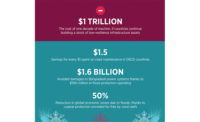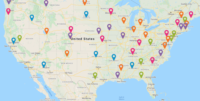Engineers eager for guidance on how to design for an uncertain future are welcoming the newly published manual of practice from the American Society of Civil Engineers: "Climate-Resilient Infrastructure: Adaptive Design and Risk Management."
Released at the ASCE annual conference in Denver on Oct. 14, early copies of the approximately 250-page Manual of Practice 140 sold briskly at the conference bookstore. Bilal Ayyub, editor of the MOP, said fellow engineers at the convention stood in line to get his autograph, which has “never happened to me.”
The manual is intended to provide guidance to engineers, “at this stage when standards have not been updated to account for more severe climate or weather extremes,” Ayyub said in a presentation Oct. 14 to the industry leaders forum at the convention. The manual does not provide thresholds for design, but explores methods of adaptive design and adaptive risk management.
“The manual provides guidance for and contributes to the development and enhancement of standards for infrastructure analysis and design and the numerous regulation and building codes that refer to them,” according to an abstract of the manual.
Ayyub and his co-authors explore analytic methods that support engineering decisions based on potential losses and benefit/cost analysis rather than on past data. The manual also explores computational methods of determining flood loads.
One chapter explores how design methods derived from the observational method, favored by geotechnical engineers, can be used to manage uncertainty in future weather and climate extremes. Using the method initial construction costs can be reduced by designing infrastructure based on the most probable conditions rather than the most unfavorable conditions, according to the abstract.
Ayyub says the manual is an interim solution and it may take several years to develop climate-resilient infrastructure standards.
The manual was developed over the last two years, with a team led by Ayyub, a professor of civil engineering at the University of Maryland, which included lead authors Ted Vinson, Dan Walker, Miguel Medina, Richard N. Wright, and nine contributing authors. It was peer-reviewed by an ASCE blue-ribbon panel as well as the Water Resources Committee of the American Meteorological Society and the Water Utility Climate Alliance.





Post a comment to this article
Report Abusive Comment